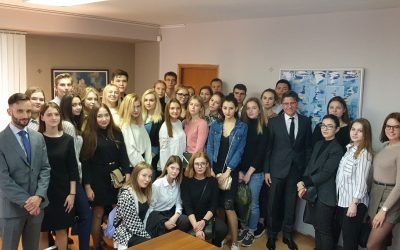Description
The content of the major 12.00.03 “Civil law; business law; family law; private international law” is a study of industries, subsectors and institutions, the legal norms of which regulate property and personal non-property relations that develop in the field of civil (including business) turnover, personal non-property and property marriage and family relations, as well as property and personal non-property relations arising in the field of civil (including entrepreneurial) turnover with the participation of a foreign element.
Areas of research
1. Civil law
1.1. Science of civil law, its formation and development. Civil law as private law. Content and main features of private law regulation. Civil law in the system of branches of law. Private law system and civil law system.
1.2. The subject of civil law regulation. Types of property and non-property relations regulated by civil law. Features of proprietary, obligation, intellectual and corporate relations.
1.3. Sources of civil law.
1.4. Civil legal relationship; its elements and structural features. The content and types of subjective civil rights and subjective civil obligations. Civil legal personality.
1.5. Civilian as an individual subject of civil law; signs that individualize his/her civil status. Acts of civil status.
1.6. The essence and characteristics of a legal entity.
1.7. Civil legal personality of public law entities. The Russian Federation, its subjects and municipalities as special subjects of civil law.
1.8. Objects of civil relations. Category “property” in civil law.
1.9. Legal facts in civil law. Legal structures (не уверена в термине). Transactions; contracts and unilateral transactions.
1.10. Implementation of subjective civil law; execution of a subjective civil obligation; their ways.
1.11. Protection of civil rights.
1.12. Civil liability as a way to protect civil rights, its main features and functions. Types of civil liability.
1.13. Real rights, their signs, and types. Objects of real rights. Real and property rights. Ownership and proprietary protection in civil law.
1.14. Property right as an institution of civil law and as a subjective real right, its content.
1.15. The right to common property, the grounds for its origin and types. The legal nature of the share of a participant in a common shared property.
1.16. Limited property rights, their types and objects; relationship with ownership.
1.17. Civil law methods of protecting property rights; the ratio of real and property rights and methods of obligation to protect real rights.
1.18. The main legal institutions of intellectual property. Correlation and relationship of property rights and intellectual property rights.
1.19. Copyright, its functions and sources. Objects of copyright and criteria for their protection.
1.20. Patent law. International patent law conventions.
1.21. Civil protection of computer programs and databases.
1.22. Rights to means of individualization of legal entities, goods, works, services, and enterprises: objects and subjects, legal regime of protection and use.
1.23. Civil protection of personal non-property rights.
1.24. Obligation as a civil legal relationship, its content and types.
1.25. The essence and significance of a civil contract.
1.26. Obligations to transfer property into ownership.
1.27. Obligations from contracts for the transfer of property for use.
1.28. Obligations from residential tenancy agreements and other residential obligations.
1.29. Obligations to work.
1.30. Obligations to acquire and use exclusive rights.
1.31. Obligations to provide actual and legal services.
1.32. Financial services contractual obligations.
1.33. Obligations from multilateralism and its unilateral actions.
1.34. Non-contractual (law enforcement) obligations; their types and functions.
1.35. Hereditary succession and its types. Grounds for inheritance. Objects of hereditary succession.
2. Business law
2.1. Science of business law, its formation and development.
2.2. The concept of entrepreneurial activity and its difference from other economic activity and other types of activity.
2.3. Legal regulation of entrepreneurial activity: its system and structure.
2.4. Business entities.
2.5. An individual entrepreneur as a subject of business law.
2.6. Features of the civil legal status of individual entrepreneurs.
2.7. Legal entities as subjects of entrepreneurial activity. Features of the creation of business entities (legal entities). Features of the creation and termination of a credit institution.
2.8. Legal regulation of economic dependence. Affiliation, problems of legal regulation of affiliated persons.
2.9. Features of insolvency (bankruptcy) of business entities. Arbitration administrators and their self-regulatory organizations. Features of insolvency (bankruptcy) of certain categories of debtors (entrepreneurs).
2.10. State and entrepreneurial activity. State policy in the field of entrepreneurship development.
2.11. The concept of competition in Russian law. The concept of monopolistic activity and signs of unfair competition.
2.12. Regulation of conflicts of interest in the activities of business entities.
2.13. Trade as a type of entrepreneurial activity. Subjects and objects of trading activities.
2.14. Legal regulation of the placement and execution of orders for the supply of goods, performance of work, provision of services for state, municipal needs, the needs of budgetary institutions and other entities. Federal contract system.
2.15. Legal regulation of financial markets. Legal regulation of the securities market. Securities and other financial instruments used in entrepreneurial activity.
2.16. Legal regulation of auditing.
2.17. Legal regulation of investment activities. Investment and investment activity concept.
2.18. Legal regulation of innovation. The concept of innovation and innovative activity. Legal regulation of the intellectual property market.
2.19. Legal regulation of business activities in the field of construction.
2.20. Legal regulation of entrepreneurial relations in the field of agriculture. State support for lending to agricultural producers. State commodity interventions to regulate the market for agricultural products, raw materials, and food.
2.21. Legal regulation of entrepreneurial activity in the field of transport.
3. Family law
3.1. The concept of family law and its place in the system of branches of law. The subject and method of family law. Family law functions. Basic principles of family law.
3.2. Sources of family law. Historical development of Russian family legislation, its main trends. The role of contracts in the regulation of family relations.
3.3. The concept and types of family relations. Subjects and objects of family relations. Legal facts in family law. The emergence, change and termination of family rights and responsibilities.
3.4. Exercising family rights and fulfilling family responsibilities. Terms in family law.
3.5. Protection of family rights. Responsibility in family law. Types of family legal sanctions.
3.6. Spousal (marriage) legal relationship. Conditions of marriage. Actual marriage and its protection. Grounds and consequences of declaring a marriage invalid. Reorganization of marriage. Termination of marriage.
3.7. Personal non-property rights and obligations of spouses. Property rights and obligations of spouses. Legal and contractual regimes of spouses’ property. Responsibility of spouses for obligations. Features of the alimony obligation. Alimony obligations of spouses and former spouses.
3.8. Parental relationship, the grounds for its occurrence. The rights of minor children. Parents’ rights and responsibilities. Disputes about children. Change and termination of the parental relationship. Annulment and limitation of parental rights. Alimony obligations of parents and children. Alimony rights and obligations of other family members.
3.9. Adoption. Legal problems of adoption of children by foreign citizens. Guardianship and custody of children. Foster family.
4. Private international law
4.1. The concept of private international law. Foreign element in private international law.
4.2. Sources of private international law. The doctrine of private international law and its legal significance.
4.3. Collision method. Concept, functions, and legal nature of a conflict of laws rule.
4.4. Over-imperative norms (norms of direct application). Over-imperative norms of the country of the court and foreign states. Public policy clause.
4.5. The method of unified substantive regulation. Ways of material and legal unification. International treaty and its types. Legal codes, model standart laws. Customs, usages, standard contracts. The lex mercatoria theory, its current state.
4.6. Subjects of private international law. Natural persons: personal law of an individual; legal regimes that determine the situation of foreigners and stateless persons.
4.7. Property rights in private international law. Real legal statute, methods of its definition and scope.
4.8. Rights to protected results of intellectual activity and means of individualization in private international law: copyright, related to copyright, patent law, the right to a trademark and service mark, the right to an appellation of origin.
4.9. Contractual obligations in private international law. The law applicable to contractual obligations. The principle of the autonomy of the will of the parties. Choice of applicable law agreement.
4.10. Certain types of contractual obligations in private international law. The contract for the international sale of goods.
4.11. Non-contractual obligations in private international law. Unified substantive and conflict regulation of obligations as a result of harm.
4.12. Inheritance law in private international law. Unified substantive and conflict regulation of hereditary relations. Inheritance by law and by will.
4.13. Family relations complicated by a foreign element. Sources of legal regulation. The law applicable to the basic institutions of family law (marriage and divorce, relations between spouses, between parents and children, recovery of alimony, adoption).
4.14. Labor relations complicated by a foreign element. Sources of legal regulation.
4.15. International civil process. The place of international civil procedural law in the system of law and jurisprudence. Sources of legal regulation.
4.16. International commercial arbitration, its legal nature. Legal regulation of the activities of international commercial arbitration. Arbitration agreement. Determination of applicable law in international commercial arbitration. Recognition and enforcement of international commercial arbitration awards.
Competences and advantages
The content of the major12.00.03 includes studies of basic notions, fundamental categories and concepts that characterize the essential features and characteristics of civil, business, family and private international law, including the study of the experience of foreign countries, issues of the history of legal regulation of property and personal non-property relations in the sphere of civil (including business) turnover, family, private international law, as well as the history of civil law thought.








